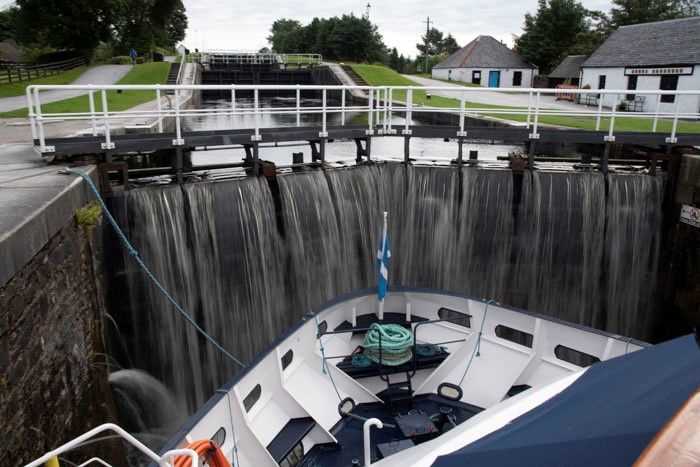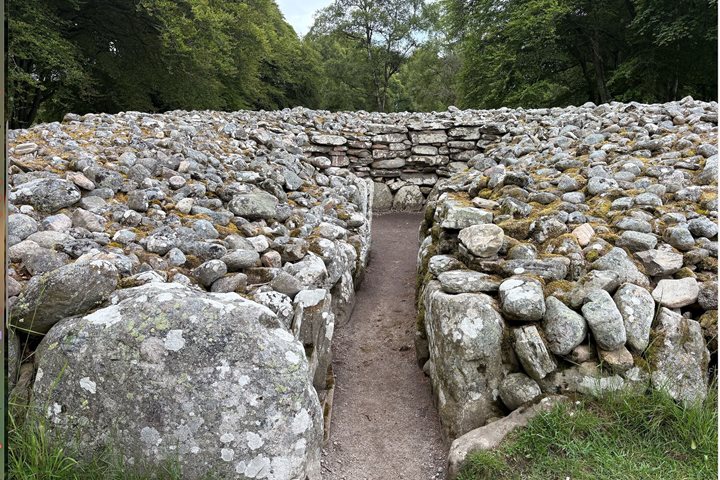In the early morning sunshine, Lord of the Glens slipped away from her berth inside the sea lock where the Caledonian Canal meets the open saltwater of Loch Linnhe under the shadow of Ben Nevis. We sailed on to Banavie, the railway bridge and the road bridge swinging open for us, stopping all the traffic as we passed through. Then we began our ascent of Neptune’s Staircase, a spectacular grouping of eight locks that raises vessels a total of 64 feet. The canal was constructed between 1803 and 1822, cutting through the Great Glen and connecting the North Sea with the west coast of Scotland. The distinguished engineer behind its construction, Thomas Telford, economized on both the building and the operation of the canal by concentrating the locks at either end and in the center at Fort Augustus, our destination for the day.
We made steady progress along the canal. The rise of mountains on either side. The steep rocky shore was covered in the native deciduous woodlands of forestry plantations that gave way to the heather-covered hilltops above, broken occasionally by a bright green field or a white-painted cottage. We passed the Moy swing bridge, the last remaining hand-operated bridge from the Telford era. We sailed the length of Loch Lochy, and entered Laggan Avenue, the highest and narrowest section of man-made canal—and arguably the most beautiful. To create this part of the canal, high banks were constructed on either side and consolidated with the planting of many hundreds of Scots pine. In Loch Oich, we passed the romantic ruins of Invergarry Castle, which was slighted after the Jacobite rebellion in 1746. Swallows darted about, not yet ready to depart for their long autumn migration south, and a solitary buzzard soared overhead from time to time.
The well-maintained towpath is no longer required for pulling sailing ships along the canal, but today it is enjoyed by long-distance hikers, cyclists, and dogwalkers. Many of us rode bicycles here for the six-mile last stage to Fort Augustus in warm sunshine, the scent of wildflowers wafting in the air. Fort Augustus is a charming village on the south shore of Loch Ness. Here there was an opportunity for a hike along the towpath, peaty rivers, and deep country lanes to an ancient graveyard with equally ancient yew trees and fascinating lichen-covered headstones. Others preferred to watch the world go by in the warm sunshine with ice cream. Will this lovely weather never end?









